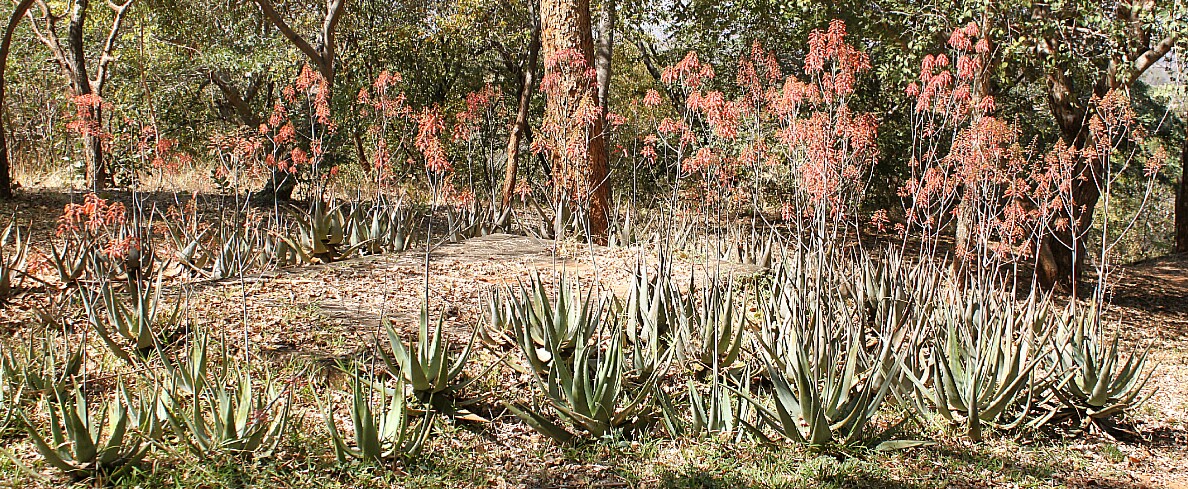The native aloes around our house are in bloom. They only do this once a year. Not only are these scaffolded fire-orange flowers a feast for the eyes, they are a feast for myriad bird species. As I am preparing this post, less than three feet away from me a scarlet-chested sunbird and a golden weaver are hopping up and down the ladder of flowers taking noisy, glee-filled turns at sucking out the nectar.

The aloe inflorescences–or clusters of flowers–along with the fleshy leaves are an excellent source of goodness for so much in the natural world. Including us. The Zambians regard the flowers not only as a culinary treat (they sun-dry and grind them into a powder, later to be eaten with pumpkin leaves and groundnuts), but also as indispensable traditional medicine.

Records of the aloe’s health benefits reach all the way back to the Ancient Egyptians who bestowed on it deity-like status. I read that when a Pharaoh died, the funeral ceremony was by invitation only for those who could afford to donate a pound of aloes.
According to Gertrude Baldwin, who has written at length about the aloe, in the Middle East it was used an additive to palm wine known as the Elixir of Jerusalem, as well as a powerful deterrent against evil spirits. King Solomon, meanwhile, held it up as extremely valuable, and in the Bible’s Psalm 45 it says: “… All your garments are fragrant with myrrh and aloes and cassia.”
Ms. Baldwin wrote that the Hindus believed aloes grew in the “Garden of Eden,” while the Chinese referred to it as the “harmonic remedy.” The Native Americans used it as an emollient, as well as in rituals, while the Arabs referred to it as the Desert Lily. They crushed the prickly leaves with their bare feet, later drying the pulp into a powder … just as the Zambians do with the flowers today.

And let’s not forget those hallucinating hippies from the 60’s who coveted the aloe not so much for its healing power but in the hope of getting high. In the words of American poet, Kevin Rottwieler:
aloe fields and hippies
I hear the drums a coming
Ohio, Ohio
Neil Young
USA town
people smoking aloe
a green herbal
a flashback
of the 1960s
hippies
wearing beads
peace
peace
and John Lennon
where did all the time go?
a song about yellow snow
music and smoke
on the water
peace signs
American flags
aloe fields of herbal medicine
today’s truth
found in a bottle
life running out of throttle
grab what time is left
Woodstock
and people everywhere
Mick Jagger
has a sore throat again
is Tom Petty available?
hippies wearing beads
where did all the time go?
I cannot answer the question, “where did all the time go,” but I can say that aloe vera even goes back to the discoverer of great countries and great food, Christopher Columbus. (Yes, him again.) Ms. Baldwin claims that the Jesuit priests of Spain were instrumental in bringing aloe vera to the New World, as they called it, going on to quote Columbus as saying that “four vegetables were indispensable for the well being of man: wheat, the grape, the olive and aloe. The first nourishes him, the second raises his spirit, the third brings him harmony, and the fourth cures him.”

